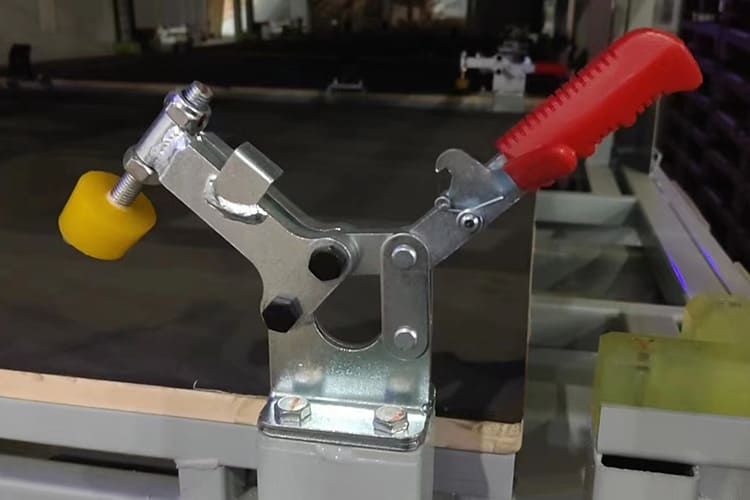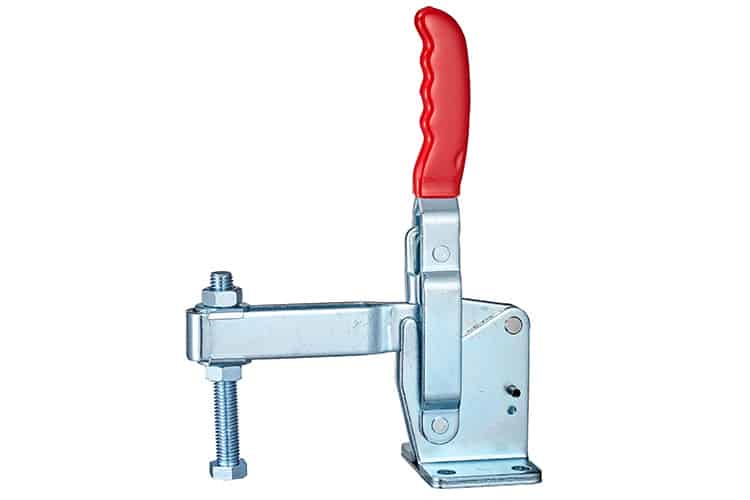In today’s industrial world, there are myriad tools and devices that facilitate a wide range of operations, some so specific that only the experts know them by name. One such tool that might be unfamiliar to the general populace, yet indispensable in various applications, is the toggle clamp. But what exactly are vertical and horizontal toggle clamps? Why are they significant?
Toggle clamps are fastening devices used to hold or grip objects securely to prevent movement or separation during processes. Vertical and horizontal denote their operational directions, with each catering to specific needs and applications.
They might sound niche, but their applications are vast, often exceeding what meets the eye. Let’s delve deep into their world.

Types of Toggle Clamps
Toggle clamps, though simple in appearance, can be divided into multiple types based on their design and application. Two primary classifications are vertical and horizontal.
Vertical toggle clamps operate in an up-and-down motion, with the handle moving vertically. They’re particularly useful when space constraints demand a vertical handle movement. Horizontal toggle clamps, on the other hand, function sideways. Their horizontal operation can be suitable for operations that require a side-to-side handle movement.
Principles of Operation
The underlying principle of a toggle clamp is mechanical advantage. By using levers, pivots, and links, a small input force (from the operator) can produce a larger output force on the workpiece.
For both vertical and horizontal toggle clamps, the mechanism involves a pivot and lever system. When the handle is actuated, the clamping arm moves, either vertically or horizontally, to hold or release the object. The clamping force is maintained until the operator decides to release it, ensuring consistent pressure and stability.

Common Applications
Outside the realm of furniture and architecture, toggle clamps find their place in several industries. From automotive manufacturing to electronics, their ability to provide consistent clamping pressure makes them invaluable.
For instance, in electronics assembly lines, they might be used to hold circuit boards steady during soldering. In automotive applications, they might secure components during machining or welding processes.
Benefits
The advantages of toggle clamps, regardless of their orientation, are manifold. Firstly, they offer quick and efficient clamping. With a simple movement of the handle, objects can be secured in place.
Secondly, they provide consistent pressure, which is crucial in many industrial applications to ensure uniformity and precision. Additionally, their robust design means they can withstand significant wear and tear, making them a cost-effective solution in the long run.
Limitations
No tool is without its limitations, and toggle clamps are no exception. Their clamping force, though consistent, might not be suitable for extremely heavy or oversized objects. Moreover, they require manual operation, which might not be ideal for tasks requiring rapid and frequent clamping and unclamping.
Selection Criteria
Choosing the right toggle clamp—vertical or horizontal—can hinge on several factors. The nature of the task, available workspace, and specific requirements of the operation all play a role.
For instance, if your workspace is constrained in height but has ample width, a horizontal toggle clamp might be more appropriate. On the contrary, tight lateral spaces might benefit more from a vertical toggle clamp.
Maintenance and Care
To ensure longevity and consistent performance, toggle clamps require periodic maintenance. Regularly inspect for wear and tear, particularly at pivot points and the clamping arm. Lubrication is essential to reduce friction and prevent premature wear.
Cleaning them from dust, debris, and other particulates will ensure smooth operation. If parts wear out or become damaged, most toggle clamps allow for easy replacement of individual components.
Conclusion
Whether vertical or horizontal, toggle clamps are vital tools in various industries, providing reliable and consistent clamping solutions. By understanding their operation, benefits, and limitations, one can optimize their use and extend their lifespan. Select wisely, maintain regularly, and they’ll be a steadfast ally in your operations.
You might also be interested:
